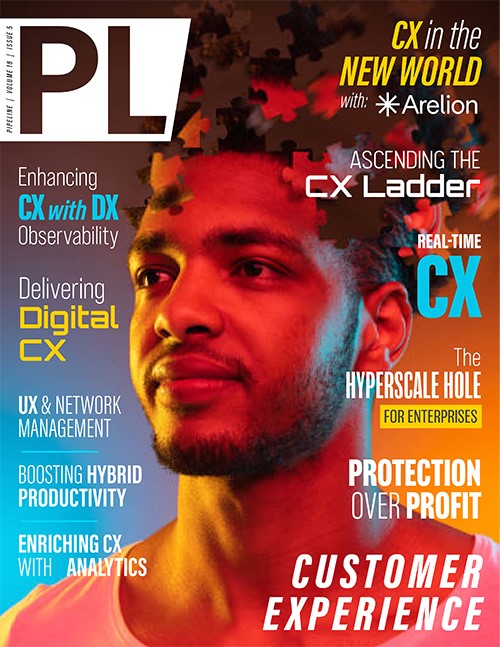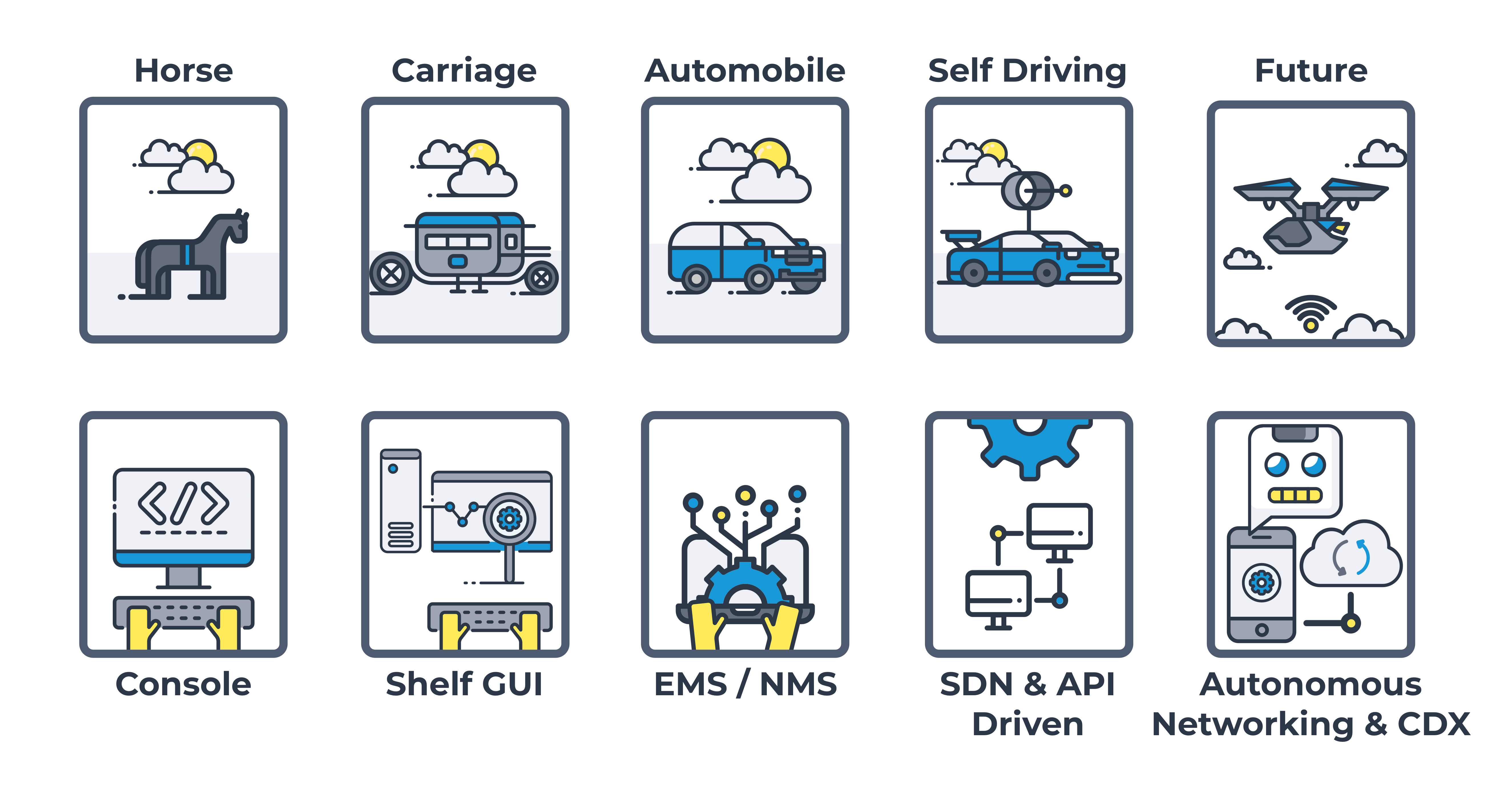The New World of UX in Network Management
By: Tim Nice
 If we were to analyze network management, and its related tools and user experience (UX), transportation provides an interesting analogy, especially concerning ‘how you drive’ when likened to
network management options and experiences. Console or command line interfaces might be laughable when compared to a horse, but the ‘hands-on’ nature of the comparison works. As we evolve from
left-to-right, from that of a carriage, automobile, self-driving, and then a drone, flying car or similar, the corollary to network management follows as the UX becomes less dependent on manual
human interaction.
If we were to analyze network management, and its related tools and user experience (UX), transportation provides an interesting analogy, especially concerning ‘how you drive’ when likened to
network management options and experiences. Console or command line interfaces might be laughable when compared to a horse, but the ‘hands-on’ nature of the comparison works. As we evolve from
left-to-right, from that of a carriage, automobile, self-driving, and then a drone, flying car or similar, the corollary to network management follows as the UX becomes less dependent on manual
human interaction.
Here’s the point. The broader strategic objective for network management is getting humans off the keyboard and away from interfacing with disparate NMS/EMS tools as well as working from a uniform control and automation framework that is autonomous and data-driven. Another variable of inclusion is that of user interfaces and experiences (UI/UX) that are then used by humans to program this autonomous driving experience as well as define how exceptions are handled (the automation fall-out when a human must act – flat tire, broken windshield, network element card to replace… you get the point).
This reflects how status and incidents are visualized, how outcome logic is defined (think workflow) and how data and notifications are received. This reflects the role of AI/ML within this construct to not only baseline and learn a network and its expected performance, but also the broader definitions and business rules logic around how exceptions are handled. This if/then/else programmability, such as automated triage and remediation of a network as just one example, comes into play. Additionally, it becomes essential to extend all this functionality across multi-vendor and multi-technology to include ‘open and disaggregated networks.'
A reality check
If we take an honest look at how we’re ‘driving’ networks today, we probably need to admit that it is still humans accessing the network via disparate EMS/NMS tools, or in many cases directly (command line). This is especially true within service providers and their transport network infrastructure. The irony here is that the nature of these networks themselves is progressing quickly toward more open, disaggregated solutions with more standardized command-and-control interfaces (SBI) that enable a more centralized control architecture. That said, as these transport networks continue to evolve, the ‘UX to drive’ these networks still looks closer to the left side of the transportation visual above as our current reality. Some network element suppliers are at least trying to help by developing a complementary controller solution to manage their respective platform, but ultimately, these still end up looking like disparate EMS environments requiring the human to have specific training and continued swivel-chair operational behavior.




















